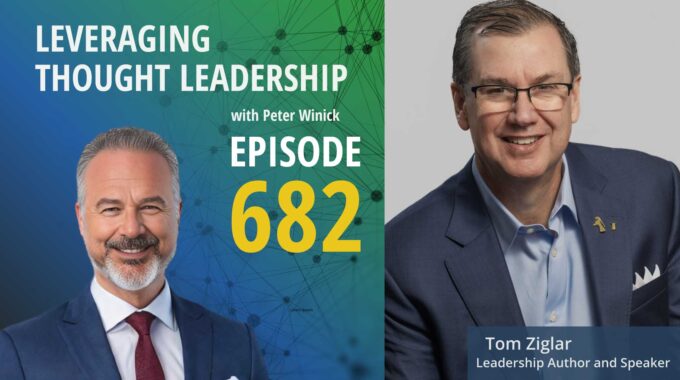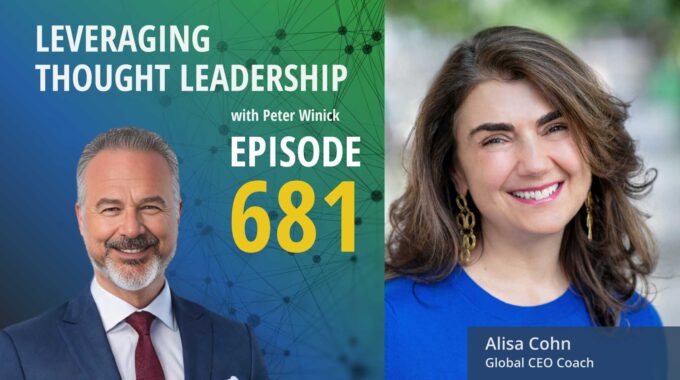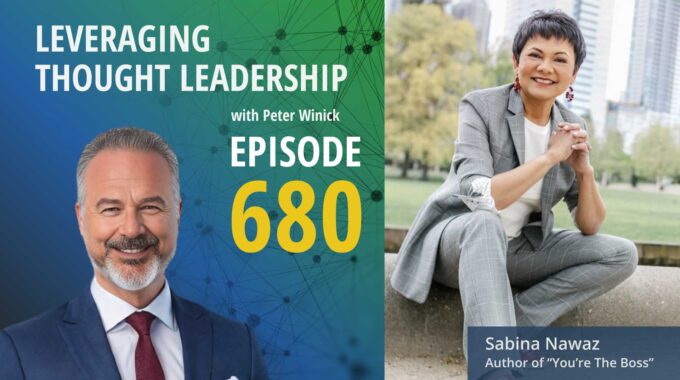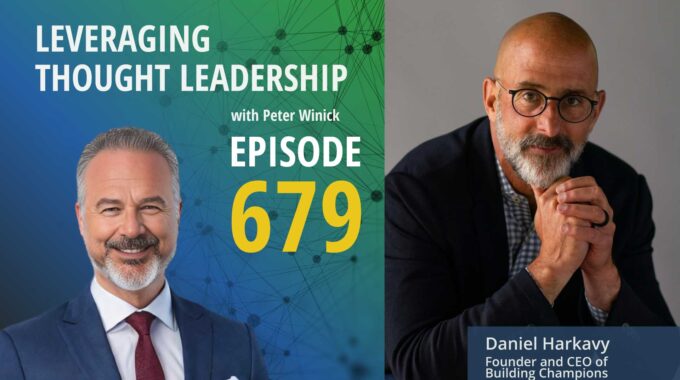How AI, Programs, and Trust Turn Ideas into a Life-Changing Business This episode explores how…
Human-Centered Leadership | Renee Moorefield
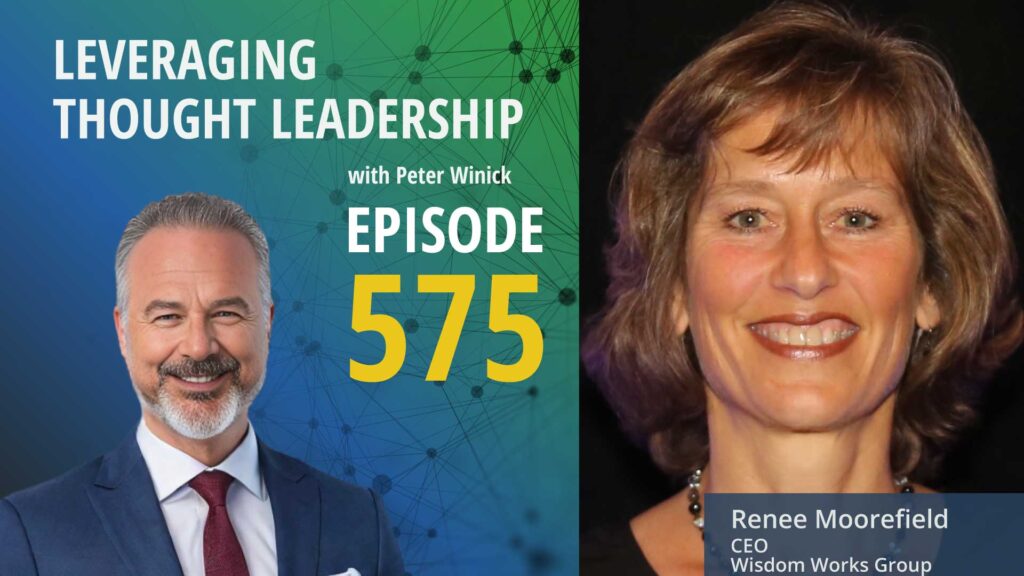
Exploring the ‘Be Well, Lead Well Pulse Assessment’
A conversation with Renee Moorefield about developing her IP from years of research and scaling it for leaders, teams, and organizations.
In this engaging episode of Thought Leadership Leverage, host Peter Winick interviews Renee Moorefield, a pioneering leader in human-centered leadership for over 25 years. Renee, the CEO and co-founder of Wisdom Works Group, has been instrumental in transforming how leaders build thriving organizations. Wisdom Works offers innovative resources and guidance to create workplaces and leadership practices that foster well-being and success.
Renee discusses the development of her intellectual property (IP). Her extensive experience in global companies highlighted a critical need: leaders often overlook human factors while focusing on financial and technical performance. Observing this trend, she brought her insights to the University of Colorado’s business school, aiming to scientifically explore the factors that contribute to thriving and stress resilience in leadership. This led to the creation of the “Framework of Thriving” under the “Be Well, Lead Well Pulse Assessment” platform. This framework redefines what it means to thrive, helping leaders understand the essential elements for success in complex environments.
Wisdom Works is now scaling its impact by working with global organizations, especially in the food and consumer goods industries. They conduct one-on-one sessions, team workshops, and organization-wide assessments to identify areas of high and low thriving. This holistic approach introduces new metrics for measuring organizational success and fosters meaningful conversations about well-being.
Additionally, Renee’s team certifies individuals in various industries to implement their tools, creating a network of approximately 225 certified Guides. Peter and Renee discuss the differences between internal and external certified guides, highlighting the unique challenges and benefits of each approach. The COVID-19 pandemic underscored the value of their tools, increasing demand for internal coaches equipped to navigate stressful times.
Ensuring the quality and consistency of their certified guides is paramount for Renee. The program sets clear expectations for knowledge, skills, and abilities, relying on an honor system for self-assessment and continuous feedback. With a 94% return on investment rate, the program’s effectiveness is evident, consistently meeting participants’ needs and enhancing their capabilities.
Three Key Takeaways:
Human-Centered Leadership is Essential: Renee Moorefield emphasizes the importance of focusing on human factors in leadership, highlighting how financial and technical performance often overshadow the well-being of people and organizational culture. Leaders need to prioritize creating thriving, sustainable environments.
Scalable, Science-Based Frameworks: The “Framework of Thriving” and the “Be Well, Lead Well Pulse Assessment” offer a scientifically grounded approach to understanding and fostering leadership that promotes resilience and thriving. This framework helps organizations identify areas of high and low thriving, driving better performance and well-being.
Certified Guides Enhance Impact: Certifying individuals in various industries to use Wisdom Works’ tools has expanded their reach and effectiveness. With approximately 225 certified guides, the program ensures consistent quality and effectiveness, as demonstrated by a 94% return on investment rate, meeting the evolving needs of leaders and organizations.
Want to learn more about customized training? Be sure to watch this short video where Peter Winick discusses how much customization is needed while developing training.
Transcript
Peter Winick And welcome, welcome, welcome. This is Peter Winick. I’m the founder and CEO at Thought Leadership Leverage. And you’re joining us on the podcast, which is leveraging all leadership today. My guest is Renee Moorefield. I’ll give you a little bit of her background. For over 25 years, Renee has been a visionary leader and innovator in the field of human centered leadership. She’s the CEO and co-founder of Wisdom Works Group, which is a social enterprise that offers guidance and state of the art resources for building brands, workplaces and leadership capabilities that advance the thriving of all people. So she’s been around this space for a long time, and I wanted to talk to her about, you know, what’s working, what’s not working, the things that we typically talk about on the show. So welcome aboard today, Renee. Thanks for coming in.
Renee Moorefield It’s great to be here.
Peter Winick So maybe start with. Go from that. Maybe the development of the IP to how, because you’re in the mature phase, right, of you’ve tried out lots of things, some have worked, some didn’t. You’re certifying folks and all that. But let’s talk about sort of how the IP got developed and then how you knew it was solid. And then we’ll get to the business side of it.
Renee Moorefield Sure, sure. That’s a that’s a really good question. So for many years, even before co-founding Wisdom Works, I worked in two global companies. And in those global companies, I was part of humanizing mergers and acquisitions, really supporting leaders and humanizing the change process. Basically kind of an easy way to say that. And what we saw then and then in, in, in our work with clients with Wisdom Works really saw that often leaders are moving so quickly, so fast, worried about the financial performance, worried about the technical performance of things, worried about other systems and structures, but not paying quite as much attention to the people and culture of things. So really started tracking that over many, many years, a couple of decades actually.
Peter Winick Well, let me pause you for a second there. And I think if you put this contextually, this is probably at the point where things like Six Sigma are taken off like wildfire, right? Ten times you have to say, well, what else was going on in the world? And I think there was this, this overarching embracing of Six Sigma, which basically is take all the waste out and be more efficient, you know, get it there and there and there. Nothing wrong with Six Sigma. Six Sigma is great, except for the fact that it doesn’t always look at the people side, you know? Right, right, right. Or that we’re living in a world today where the machines are efficient, right? We produce things with little, you know, inefficiencies. But that people thing is where we get jammed up. Right?
Renee Moorefield Totally. I’m really glad you made that pause, because you’re right. So much was focused on efficiency. Yeah. There than and you are right. We needed to do that. But we hadn’t focused on what are the human factors. What are those human factors that we really need to take into account if we’re going to create thriving, sustainable organizations? So not just efficient, not just effective, but thriving and sustainable. So we were tracking that over time, just the patterns that we were seeing, and not only the patterns we were seeing and how leaders lead, but in leaders locked into themselves and their lives.
Peter Winick I’m assuming that encompasses, you know, 5 p.m. to back to 9 a.m., right? Not just the 9 to 5. 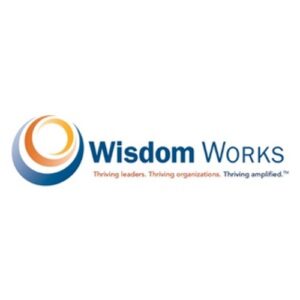
Renee Moorefield Oh yeah. Oh, yeah. This is the this is the whole life of the leader because it’s. Yeah, rarely do we show up in one way as a leader and we show up differently in our life overall. Normally that one up at work is how we’re showing up in life and most all arenas in life. And so we were seeing things like as an example and this might, connect them with some of the people that are listening, things like, I’ve worked so hard that I’ve lost relationships with my children, like, I don’t know Logan anymore. You know, partnerships, marriages, not if can others breakdowns in those relationships. Not really. No. Not taking care of your own physical health, for example, having a sense of getting to kind of 30s, 40s and losing a purpose and meaning in life. So we were really tracking all of this, and that was the basis of we now had we’ve been doing work with leaders for a few decades, and for me personally, a few that are for a while, not a few decades for a while before that. And I brought all of those patterns to the Positive Organization center at the business manager at school at the University of Colorado in Colorado. And I said, you know, we are doing work one leader at a time, but we want to be able to provide a platform based and science that looks different factors of thriving and stress resilience as it is linked to leadership, so that we can, not just do the work one leader at a time, but we can really scale this kind of thinking in the organizations that we’re working with. So that was basis of that, of developing the IP that is now our what we call our framework of thriving and under a platform called Be Well Lead Well. And this is the tool Colby it will pulse is the frame is the IP.
Peter Winick And so here’s what I like about this is there’s a hypothesis. The hypothesis is validated. And then there’s the rigor and the underpinnings of an academic standard. Right. Because oftentimes folks from a leadership standpoint come out there and it’s more story based or anecdotal or whatever, to make the points that are more maybe dramatic. And what most businesses want is maybe there’s a time in place for that entertainment kind of thing. But does this work? You know, if you say it is so, why is it so? Show me it. So. So. And then I’m going to believe you. It might be less. Sexy. You know, over the top. Whatever. But we want things that work in the business world. And I think oftentimes thought leaders lose track of the mundane or the basic standards, if you will, of how do you succeed at enterprise scale? Well, it’s not charisma that’s going to blow you up to be embraced by large companies. You’ve got to you got to have the data. You got to have the research. You got to have the credentials underneath it. So I want to move on now from. So that’s sort of how we baked the cake, right. Yeah. And we got to sell the cake. Right. So how is it that what are some of the models that you’ve worked with and where what are the ones that you’ve landed on now that are working best for you in terms of business models for you?
Renee Moorefield Yeah. Let me before I answer that question, because I will reach that question before I answer it, let me say just one thing about what the IP does. So it helps to reframe what it means to thrive. And it helps people understand what are all of those factors that really enable thriving. We base it on the being able, thriving in the middle of complex situations, all of our complexities and demands. We all have complex lives. Thriving is not being about being happy all the time. It’s not being well all the time. It really is. How internally well resourced do I feel to meet my complexities and demands with a sense of growth, with a sense of competence and with a high quality of life? So with that, the mission, there are really two ways that we have used the work and begun. I feel like we’re beginning to scale the work. One way is through organizations themselves. So our work direct to global organizations. So we do a lot of work in the food industry and the consumer goods industry, or.
Peter Winick Either a middle when you say director global organizations, to me that says, okay, well, this is industry agnostic. People are people are people. And, you know, there might be different nuances of working with a high-tech crowd that a food services crowd, a no hospitality situation, etc.. I was looking more of, well, how do you get that to scale? Do you go from individual to dozens to hundreds to thousands of people in organizations? Because that’s where a lot of thought leaders, they have that vision, that dream of, oh my God, if everybody at this company or some subset of the population could embrace this, that would be really cool. But what are the actual formats and modalities and the underlying business models to do that?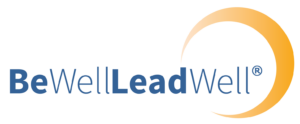
Renee Moorefield Okay. Let me see if I, will answer this better then. So some of it is one on one work. Some of it is teamwork. And then some of it is organization wide assessment work, just like you were saying. So that you can really reach the whatever number. It doesn’t matter what that number is of people and, and look at in the organization, where are there pockets of high thriving and where is it low and where is it moderate? And what do we need to do about that? It’s it brings up a whole new conversation and honestly, a whole new metric by with it, by which the organization can measure its success. So one is that direct organization that, yes, the dual team work session level. Yep. Other, which is a really different business model. And this is when I say I feel like we are just beginning because, we now have we now certify people in the work because I realized early on there are industries that Wisdom Works has not worked in, even though it is agnostic. We are experienced in that industry, but there are others that are. And so we certify people to bring the tool into other industries in ways that we might not have. And we now have about 225 what we call guides, people who are certified in this assessment framework and assessment system. And they then bring the work in, however, it makes sense for their organizations.
Peter Winick So there’s typically two variations on that model. One would be external and one would be internal. So external being a bunch of independent coaches, consultants etc. in a local marketplace or that has expertise in a specific industry that you grant them the rights to deliver that. And then the other would be people embedded in your client companies that have the rights to do that. It sounds like yours was more of the first.
Renee Moorefield No, we’re actually doing both. So, many of our open enrollment programs, which twice a year, are the external consultant, external coach, the strategist, the organizational development person, the executive themselves that finds our work and says, hey, I want to be I want to kind of embrace this way of thinking as a leader, and I want to bring it into my practice, whatever that is, practice or their company. But the other, is the internal work. And so when I go back to that first way, I said that we were working direct to organizations. Many of those organizations are making some pretty massive culture changes. So, for example, they are moving from more hierarchical models to more decentralized, maybe an agile organization and starting to realize that the limits to. Growth for an agile organization is that you can do so much collaborating and connecting in an agile organization that one of the human factors you fail to consider is burnout. That people. Yeah, yeah, yeah. And then people, you know, then they can’t reach kind of sustainable performance because people are burning out. So our work brings that element in culture changes. And so we also have certified many people inside organizations.
Peter Winick And if you’re enjoying this episode of Leveraging Thought Leadership, please make sure to subscribe. If you’d like to help spread the word about our podcast, please leave a five-star review at ratethispodcast.com/ltl and share it with your friends. We’re available on Apple Podcasts and on all major listening apps as well as at thought leadership leverage.com/podcast.
Peter Winick And I want to talk about the differences between the two. So I’ll give you what has been my observations in being in this space for a long, long time. And I’d love to get your reaction to that. So I see on the two models the let’s call them the external and the internal. On the external side, the challenges are oftentimes the folks that lean in to do that are really, really amazing practitioners. They fall in love with you and the model and the frameworks and the methodologies, but they might not be the greatest businesspeople, that it might not be able to sell as well, and they might not be able to get embedded. And they need a lot of support and nurturing. And when you look at the amount of time and energy and the effort that your organization has to spend to yield a decent return from them, it could be frustrating, right? And then you also have the variable of, well, people are people. And it’s you know, Peter was to deliver a program today and woke up in a cranky mood that might reflect in on your brain. Right. So that would be on that side. On the internal side, I actually like that model much better because if it’s deemed part of your job by your employer, etc., etc. to do it, you can, as the IP person, create the select criteria right of what people need to do a little bit more support, a little bit more control, and you’re sort of neutralizing the stressor of bringing in the business, right. Because they have clients to serve. So react to that a bit. Is that am I on point with your experience?
Renee Moorefield You are so on point. So if what I first say is, if when I look at our higher purpose to really create a healthier planet, create a more thriving planet through organizations, I say they’re both good. They’re both good if I just measure based on purpose. But if I get to business and look at, okay, now let’s look at what feels more effective, I will say the external, the people that are external coaches, external strategists, etc. you are right. Those are people that usually absolutely love what they do in the world. Their profession and what they love is sales and business development. That’s what they don’t love. So they’re looking for a tool. And this tool helps them kind of deepen the conversations they can have with a client. And it gives them another value proposition. So that’s good for client. But they don’t often love doing that sales and business development work. So I think you’re spot on. They’re the great fit but they’re fabulous people. And often and in fact, in fact, in a number of occasions now work has come larger. Work has come through them by just them making some connections, and then we can back them up and support them, which is great. The internal folks are exactly what you say. They usually have some sort of a mandate. Yes. Right. So not only becomes part of their job, they now have a culture shift or something happening in the organization that gives it roots. It gives it a place. The conditions in which that work can thrive in that organization. So they have that in a way that often the external people don’t. So I’m really reinforcing what you’re saying. I’m finding some of the same.
Peter Winick Kind of, but I want to push on the second one, a trend that I’m seeing lately, meaning the last couple of years. And my hypothesis is that when Covid hit, lots of large organizations had lots of internal facilitators, trainers, etc. we stopped doing all that because the world ended for a couple of years. So those people got let go. And then when things started to turn, return to normal or semi-normal or whatever, they tried to move that as much as they could to a variable cost instead of bringing back the bench. So one of the things that we’ve seen that’s a positive through that lens is that it used to be the only people that got certified were H.R learning training professionals. And now in many instances, some companies are saying, hey, we’re going to open this up. So if we have a program on whatever it is, resilience or negotiate whatever the program is, if that’s something that’s of interest to you, even if you sit in, I don’t know whatever technology, or operations does. Don’t have to be part of your function. Let’s have that conversation because it’s part of your personal development. And, you know, so it’s sort of a double when you’re taking people that aren’t necessarily quote, professional facilitators, and they’re leaning in because they embrace the ideas, and they love it if you see much of that.
Renee Moorefield You know, I would say during Covid, we actually certified just as many people internal in inside organizations as outside. But it’s probably because the content of our tool really met the time. So the content is about thriving and stress resilience. So we’re looking at fears linked to mental, physical, spiritual, emotional well-being. And how do we lead in a way that really creates an organization that embraces those. So I think the framework and tool really met the time met the need. So we did not see kind of a downturn there. We actually saw sort of an uptick in youth Arnold coaches. Yeah.
Peter Winick Last thing I want to touch on before we wrap is one of the challenges in scaling through people. Right. Because this isn’t just a technology. The scaling model where the oh, there’s software as a service or something like that or an app or whatever is that. People are people, right? They have good days and bad days. You would like to both deliver the same program and code score at ten, you know, on the feedback charts, but it’s totally different experiences. If the quality control isn’t there, what are the things or the processes that you put in place from a select criteria perspective to ensure that, in essence, you’re delivering a quality or consistently high-quality experience to the learner, whether they’re an employee of the company or someone that is a client of another consultant. That’s really hard, right?
Renee Moorefield It’s it’s challenging, but I think it’s super important. It’s actually important for me personally because of the quality of work that I want our organization to produce and for our brand. I mean, we actually are known for delivering that kind of quality. So in our program, we have a set of we’ve articulated the knowledge skill, ability areas that upfront people know this. These are the knowledge skill, ability areas that that you are being measured on. Now we do make it an honor system. So by the end they have to you know, we’re kind of giving them feedback and checking, but they need to say where they are and that we also, you know, you can also go to a program and then forget what you learned if you’re not immediately using it. So we also ongoing conversations after that program so that people continue to go dive deeper into the science and thriving and stress resilience and the link to Leadership Readiness program. You know, we’ve done it I think, 15 times at this point has a 94% return on investment, right. So we also ask for feedback. And we find out is this really does it, does it meet the objectives that we’ve set. Are you meeting the knowledge skill abilities and is it really meeting your need. Are you able to use this and apply it. And we get really high scores on it. So I’m proud of that. Our ability to do that.
Peter Winick Fantastic. And sometimes that means you have to be able to say no, like this person isn’t a fit or.
Renee Moorefield We’ve done that before. We have done that.
Peter Winick Yeah, I think that’s that takes a lot of courage, particularly early on in the business cycle, to say, geez, I, I would really love the revenue, but this the data or my intuition or whatever telling me that this person’s not a fit and therefore it’s going to hurt the brand and therefore it’s going to decrease my odds of penetrating further. And that’s our sort of organization. You’re going to make it a short-term win at the expense of a long term.
Renee Moorefield Yeah, I think more important than the revenue. And that situation is that is the quality of the work, because we’re interested in a certain type of impact in the world, and it is a different way of a healthier, more effective way of leading in the world. We know that. And so if the person either isn’t in a fit or more often than not, it’s not that they’re not a fit, it’s that they can’t meet. They can’t complete everything that they need to complete. Yeah. Well, we’ve more often had to do is say to people, okay, you’re not going to get certified now. But if you do these things over this period of time, you can complete the certification. So it’s rare that someone is attracted to this kind of program already. If they look at everything we’ve read in our work, they’re already vetted.
Peter Winick No, but I think that’s an important part. Is that self-selection, right. You don’t need to fall in love with a technology to be able to teach someone how to use Excel, right? Probably you like it, but I think there is an affinity or a love of the work that leads someone to want to do it. And you can’t really force that like you can with some product training or technical training or some other things. Sorry, you kind of can’t fake it. Well, this has been great. I appreciate your time and sharing your, experiences and story with us. It’s great stuff. Appreciate it.
Renee Moorefield Renee and YouTube, Peter, thank you so much.
Peter Winick To learn more about Thought Leadership Leverage, please visit our website at ThoughtLeadershipLeverage.com. To reach me directly, feel free to email me at Peter at ThoughtLeadershipLeverage.com, and please subscribe to Leveraging Thought Leadership on iTunes or your favorite podcast app to get your weekly episode automatically.


